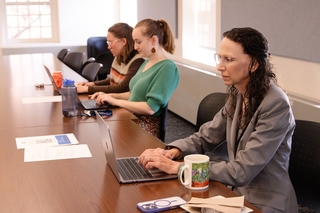“Rather than wait to see how AI will develop, we encourage our colleagues across Yale to proactively lead the development of AI by utilizing, critiquing, and examining the technology.”
Report of the Yale Task Force on Artificial Intelligence
AI Guidance for Students
While the fundamentals of teaching and learning have not changed, we understand that students must be prepared to lead in an AI-infused world. Generative AI may be used to enhance student learning in a variety of ways, ranging from summarization to problem-solving. The Poorvu Center works with students to prioritize their learning while experimenting with available AI tools and understanding how best to use those tools in compliance with individual course policies and guidelines.

AI Guidance for Instructors
Using a collaborative approach, the Poorvu Center engages with faculty and students in discussions around AI with a focus on learning from each other as we chart a path forward. We work with faculty to help evolve curricula to incorporate discussions around AI into course content and provide resources and guidance to assist in making informed decisions about whether or not to infuse AI in their teaching.

AI at Yale
Yale is positioned to lead in the exploration of AI’s ethical and societal impacts, and the Poorvu Center embraces the opportunity to lead discussions around the use of AI in teaching and learning. The University is committed to investing in AI technology and resources to assist students, faculty, and staff engage with the technology using a critical lens to explore its benefits and limitations. Only then can we make educated and informed decisions about whether or not to incorporate its use in the classroom and beyond.

Yale has the opportunity to serve as a model by adapting its curricula to prepare students to lead in advancing and considering the implications of AI.
Report of the Yale Task Force on Artificial Intelligence
Additional Resources
Learn more about the work being done in the Poorvu Center and across the university around AI.
